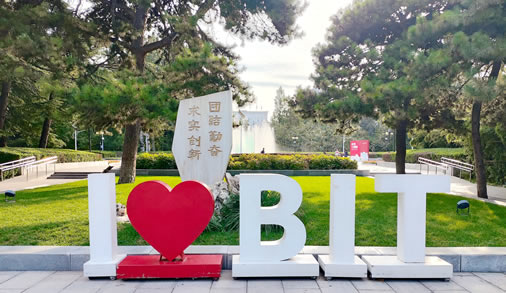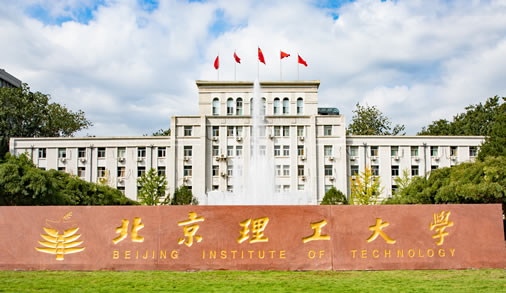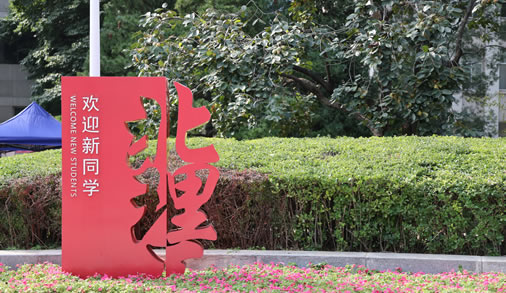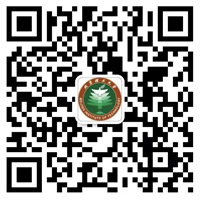

Updated: 2024-05-17
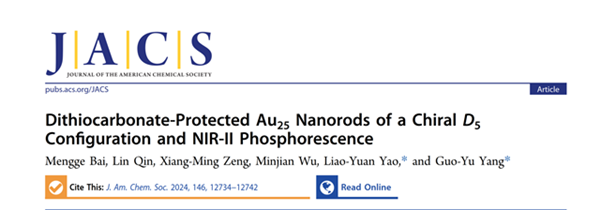
The team led by professors Yao Liaoyuan and Yang Guoyu from the School of Chemistry and Chemical Engineering at Beijing Institute of Technology (BIT) has recently made significant progress in the synthesis of gold clusters protected by dithiocarbonate (DTX) ligands. They have successfully synthesized chiral D5-configured and NIR-II phosphorescent staggered Au25 nanorods. The findings were published in the Journal of the American Chemical Society under the title "Dithiocarbonate-Protected Au25 Nanorods of Chiral D5 Configuration and NIR-II Phosphorescence." BIT is the primary author affiliation, with professors Yao Liaoyuan and Yang Guoyu as the corresponding authors and master's student Bai Mengge as the first author. The research was supported by the Beijing Natural Science Foundation, the National Natural Science Foundation of China, the BIT startup fund, and the BIT Analytical Testing Center. Special thanks were also extended to the staff of the BL17B1 beamline at the National Protein Science Research Center (SSRF) in Shanghai for their assistance in data collection.
In recent years, atomically precise gold nanoclusters have become a popular research topic due to their rich configurations and potential applications in catalysis, luminescence, and sensing. Protective ligands play a crucial role in regulating the structure and applications of gold nanoclusters. Traditionally, thiol and phosphine ligands are the mainstream ligands for synthesizing gold nanoclusters. The stabilization of gold nanoclusters using emerging alkynyl and N-heterocyclic carbene (NHC) ligands has further demonstrated the key role of surface organic ligands in controlling the size, configuration and properties of gold clusters. Introducing novel ligands not only enriches the configurations of gold clusters but also imparts new functions, helping to overcome research bottlenecks. Therefore, the use of innovative protective ligands in gold cluster systems is of significant importance despite of challenges.
The team used dithiocarbonate (DTX) ligands for the first time to synthesize two previously unreported staggered configurations of Au25 nanorods [Au25(DTX)5(PPh3)10Cl2]2+ (Au25DTX-Cl) and [Au25(DTX)5(PPh3)10Br2]2+ (Au25DTX-Br). Unlike the previously reported eclipsed D 5h symmetric Au25 nanorods, DTX ligand-protected Au25 has a staggered chiral D 5 configuration. The use of DTX ligands induced symmetry breaking, enabling the construction of chiral gold clusters from achiral ligands. Experimental results combined with theoretical calculations (DFT) showed that the staggered configuration is the primary reason for the red shift in emission wavelength to NIR-II, making these gold clusters highly promising for applications in bioimaging.
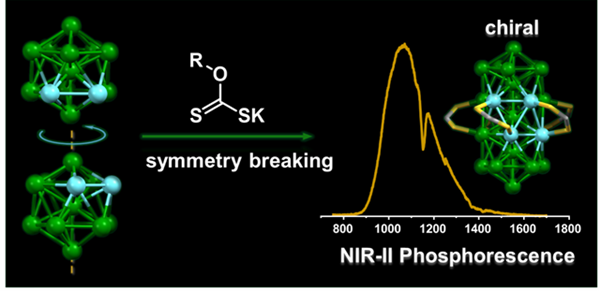
Figure 1. The structure and functional schematic diagram of the gold cluster synthesized with DTX ligand [Photo/english.bit.edu.cn]
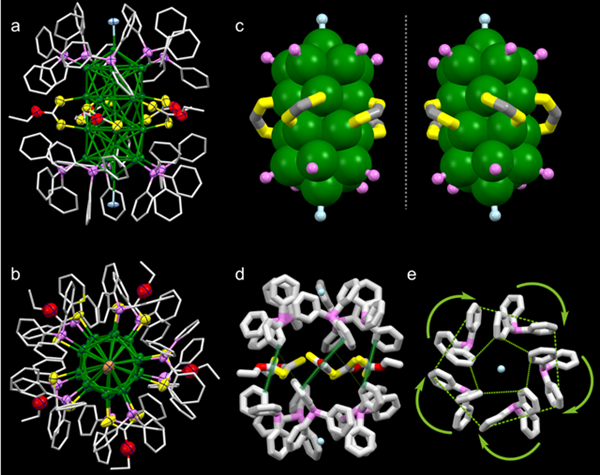
Figure 2. Schematic diagrams of the structures of Au25DTX-Cl and Au25DTX-Br [Photo/english.bit.edu.cn]
The team used experimental results and DFT calculations to explore the reason for the emission red shift to NIR-II in the staggered configuration. They found that the NIR-II emission mainly originates from the triplet state of the cluster center, further confirming that the staggered configuration is the determining factor for the red shift. (Figure 3)
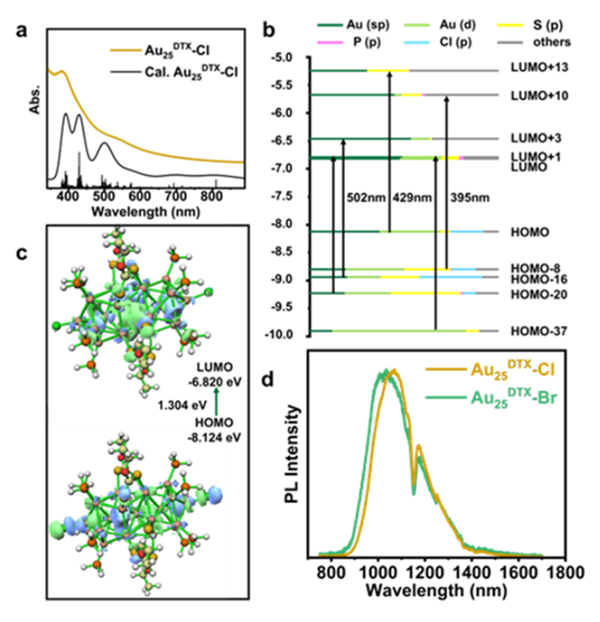
Figure 3. UV-Vis absorption spectra, emission spectra, and DFT-related computational results of Au25DTX-Cl and Au25DTX-Br [Photo/english.bit.edu.cn]
Due to the lack of fixed chiral selection direction in the reaction system, racemic products were obtained. By using chiral DTX ligands, the team successfully achieved chiral separation, obtaining single crystals of two enantiomers (P-Au25DTX-Cl and M-Au25DTX-Cl). The single crystal structures clearly showed that under the induction of chiral ligands, the dithiocarbonate ligands on the waist of the nanorods exhibit left-handed (M) and right-handed (P) helical directions, indicating that molecular chirality induced the formation and separation of supramolecular chirality. Circular dichroism (CD) spectra obtained from experiments and calculations further verified the chiral properties of DTX-protected Au25 nanorods.
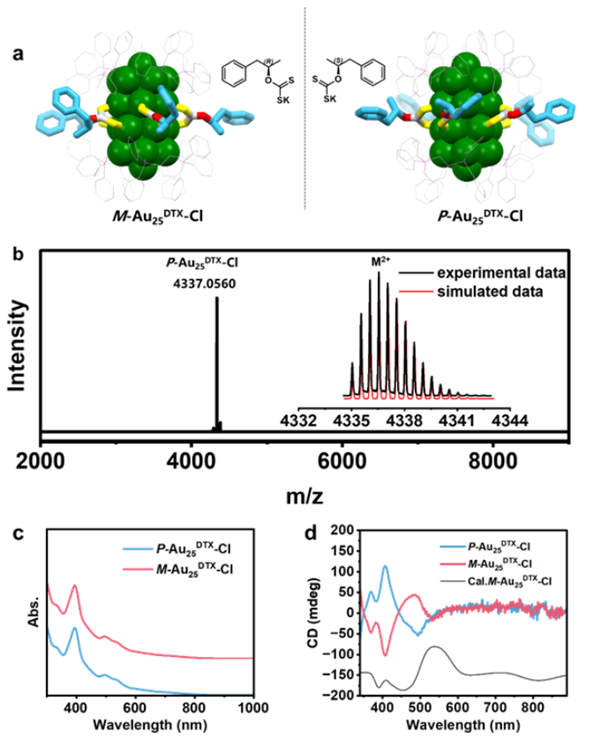
Figure 4. Schematic diagrams of the structures of P-Au25DTX-Cl and M-Au25DTX-Cl, along with UV-Vis and CD spectra [Photo/english.bit.edu.cn]
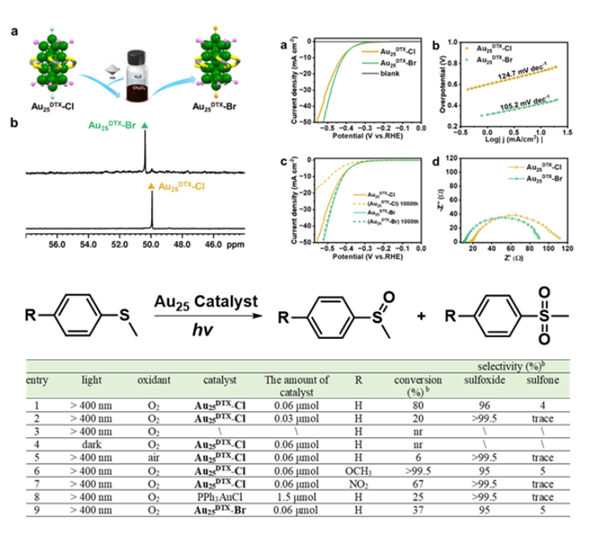
Figure 5. Schematic diagram of catalytic experiments and anion exchange experiments [Photo/english.bit.edu.cn]
Anion exchange experiments demonstrated that Au25DTX-Br has better stability compared to Au25DTX-Cl. To further explore the catalytic properties of these staggered Au25 nanorods, the team conducted photocatalytic thioether oxidation and electrocatalytic hydrogen evolution experiments. Results showed that the catalytic properties of the clusters highly depend on their configuration and structural stability.
This work, utilizing bidentate DTX ligands, constructed unprecedented chiral D 5 symmetric staggered Au25 nanorods. The introduction of DTX ligands induced symmetry breaking, achieving the construction of chiral gold clusters from achiral ligands. The chirality originated from the unidirectional arrangement of DTX ligands on the waist of the Au25 nanorods, and chiral separation was successfully achieved using chiral ligands. The NIR-II phosphorescence emission wavelength red-shifted to 1075 nm in staggered Au25 nanorods showed excellent prospects for bioimaging applications. The photocatalytic thioether oxidation and electrocatalytic hydrogen evolution performances are related to the configuration and stability of the gold nanoclusters. This research broadens the development direction for the design and synthesis of novel gold nanoclusters and helps to better understand the functionalization and applications of metal nanoclusters.
Paper link:https://pubs.acs.org/doi/abs/10.1021/jacs.4c02411
About the authors:
Professor Yao Liaoyuan is a Ph.D. supervisor at the BIT School of Chemistry and Chemical Engineering. He obtained his Ph.D. from the University of Hong Kong in 2017 and continued postdoctoral research in the same research group, with additional experience at the University of California, Berkeley. Yao joined BIT in 2021, and now is a national-level youth talent and BIT Teli youth scholar. Focusing on the design and synthesis of functional clusters, Yao designs and constructs new cluster structures with specific configurations and functions at the molecular level. Using clusters as basic units, he further builds multilevel cluster-based structures and functional materials, aiming to achieve the bottom-up construction of new sensing, catalytic, and luminescent materials. He has published over 30 research papers in notable journals such as Chem, J. Am. Chem. Soc., and Angew. Chem. Int. Ed.
Dr. Yang Guoyu is a professor and the director of the Ministry of Education's Key Laboratory of Atomic and Molecular Cluster Science at the BIT. He had been continuously listed as an Elsevier Highly Cited Chinese Scholar in Chemistry from 2014 to 2023 and has published over 540 academic papers in journals such as Chem. Rev., Chem. Soc. Rev., Acc. Chem. Res., Coord. Chem. Rev., Angew. Chem. Int. Ed., and J. Am. Chem. Soc. Yang has received national awards and leads major national research projects, specializing in the design, synthesis, assembly, and properties of oxo-clusters. He has been selected for a national talent program and has won the second prize of the National Natural Science Award as the first contributor. He serves as the chair of the Chinese Chemical Society's Crystal Chemistry Committee and the deputy chair of the Mineral Composite Materials Committee of the Chinese Society for Composite Materials. He is the associate editor of the journal Tungsten and a board member of several journals including Chinese Journal of Inorganic Chemistry, Chemical Journal of Chinese Universities, Chemical Research in Chinese Universities, Journal of Structural Chemistry, and Fundamental Research. Yang has long been engaged in the research of oxo-cluster chemistry, making significant contributions in the design, synthesis, assembly, and performance of oxo-clusters. Yang holds nine national patents, has authored one monograph titled Oxo-Cluster Chemistry and has written multiple book chapters. He has led major national scientific research projects, key projects of the National Natural Science Foundation of China, and general projects of the National Natural Science Foundation of China.


